Bend Timber Grid shells
Form finding and structural analysis of actively bent timber grid shells
B. D’Amico, A. Kermani, H. Zhang
Centre for Timber Engineering (CTE), School of Engineering and the Built Environment, Edinburgh Napier University, Edinburgh, UK
Grid shells are efficient structural systems covering large open spaces with relatively small amount of materials. Also, post forming techniques allow realization of geometrically complex (free-form) shapes by means of standard connection systems.
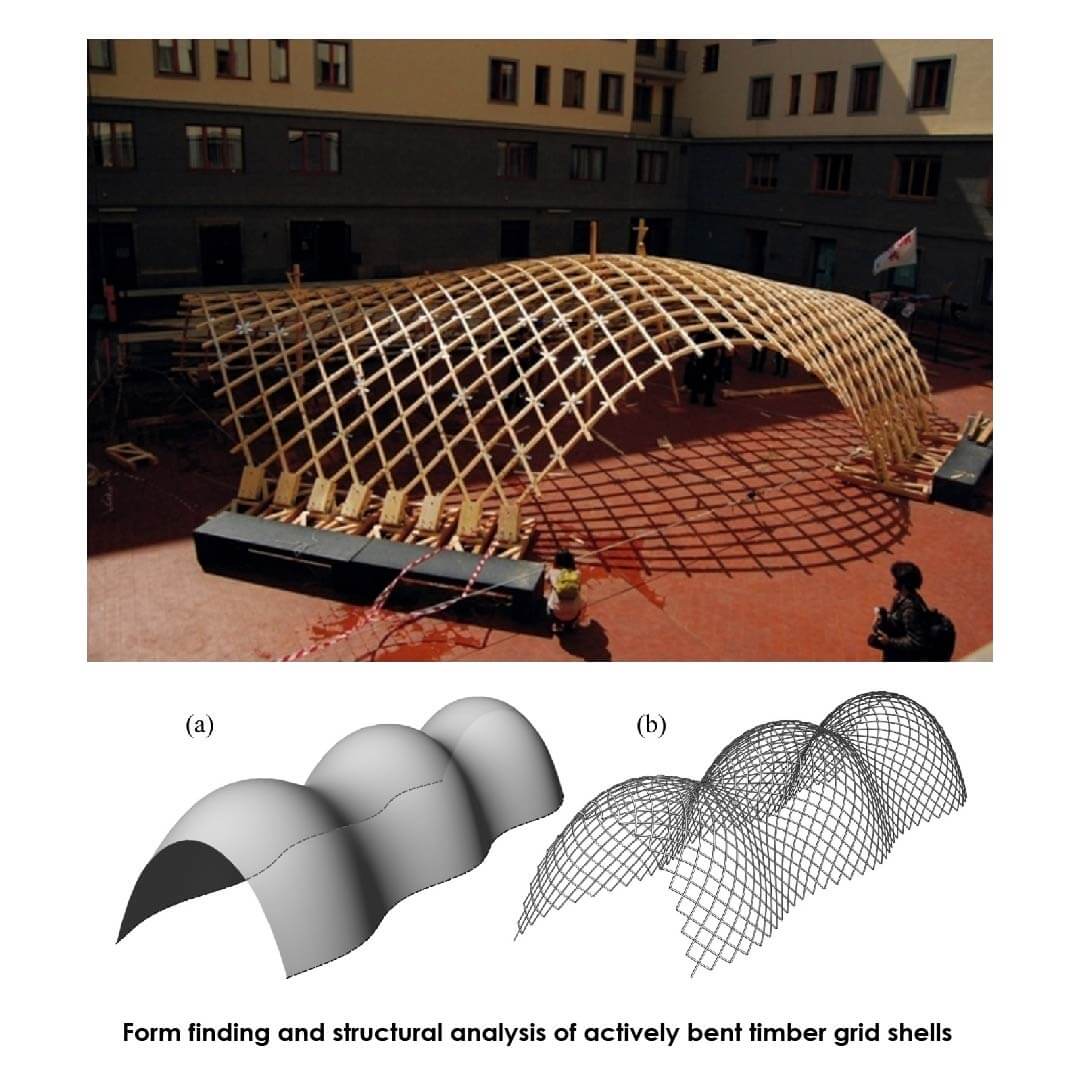 However, due to complexity of the analysis-design process, they are rarely utilized in construction design.
However, due to complexity of the analysis-design process, they are rarely utilized in construction design.
In this paper, a ‘facilitating’ numerical framework is introduced in which, for a given continuous reference shape, a geometrically similar discrete model is found by implementation of a six degree of freedom formulation of the Dynamic Relaxation method, to handle members bending and torsional stiffness.
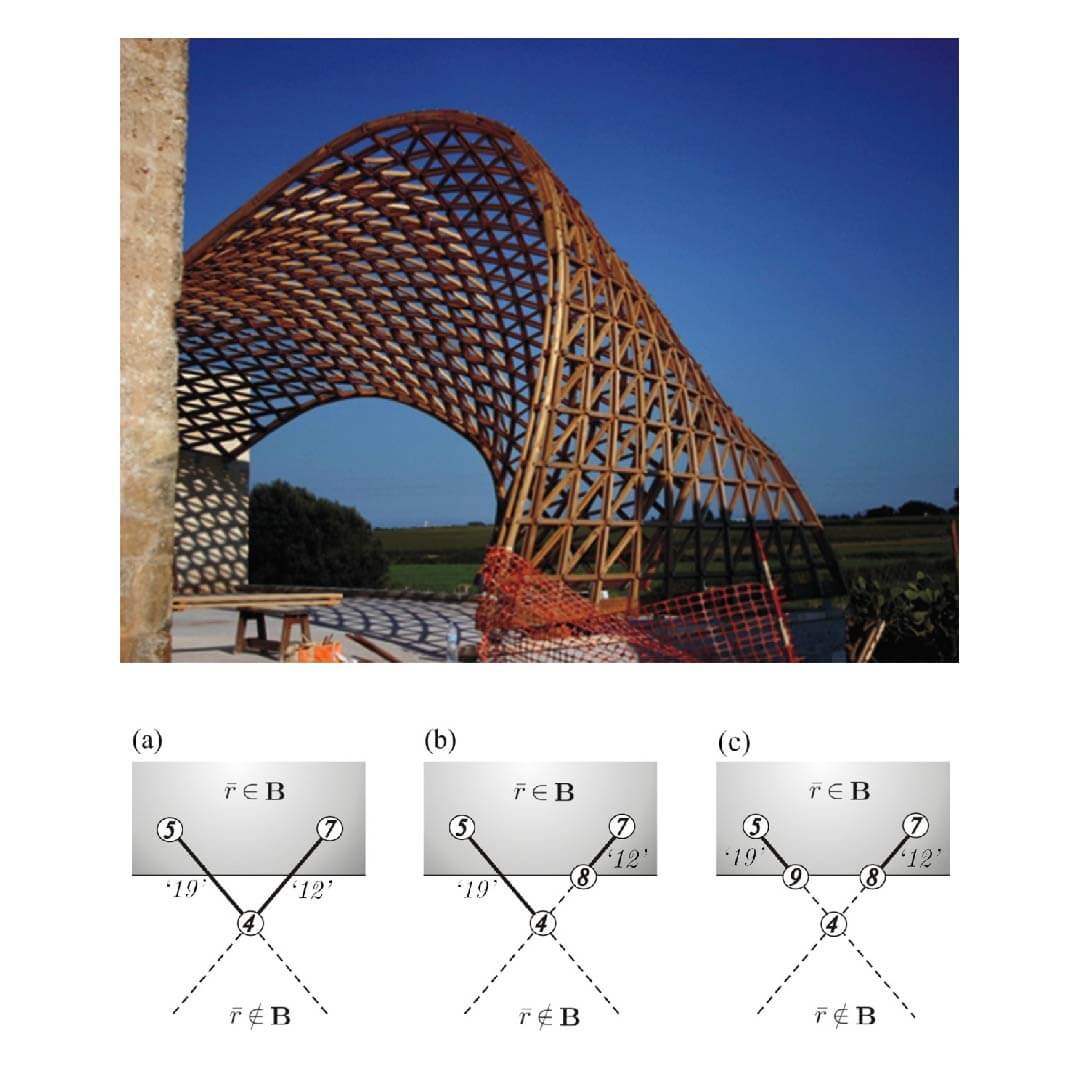 A grid cutting pattern algorithm is introduced, as well as methods to numerically simulate the double-layer construction technique and a novel (singlenode) cylindrical joint model.
A grid cutting pattern algorithm is introduced, as well as methods to numerically simulate the double-layer construction technique and a novel (singlenode) cylindrical joint model.
The methods are extensively tested and validated on a range of structures, from ‘simple’ single-rod cases to more complex, actively bent, grid shell frameworks.
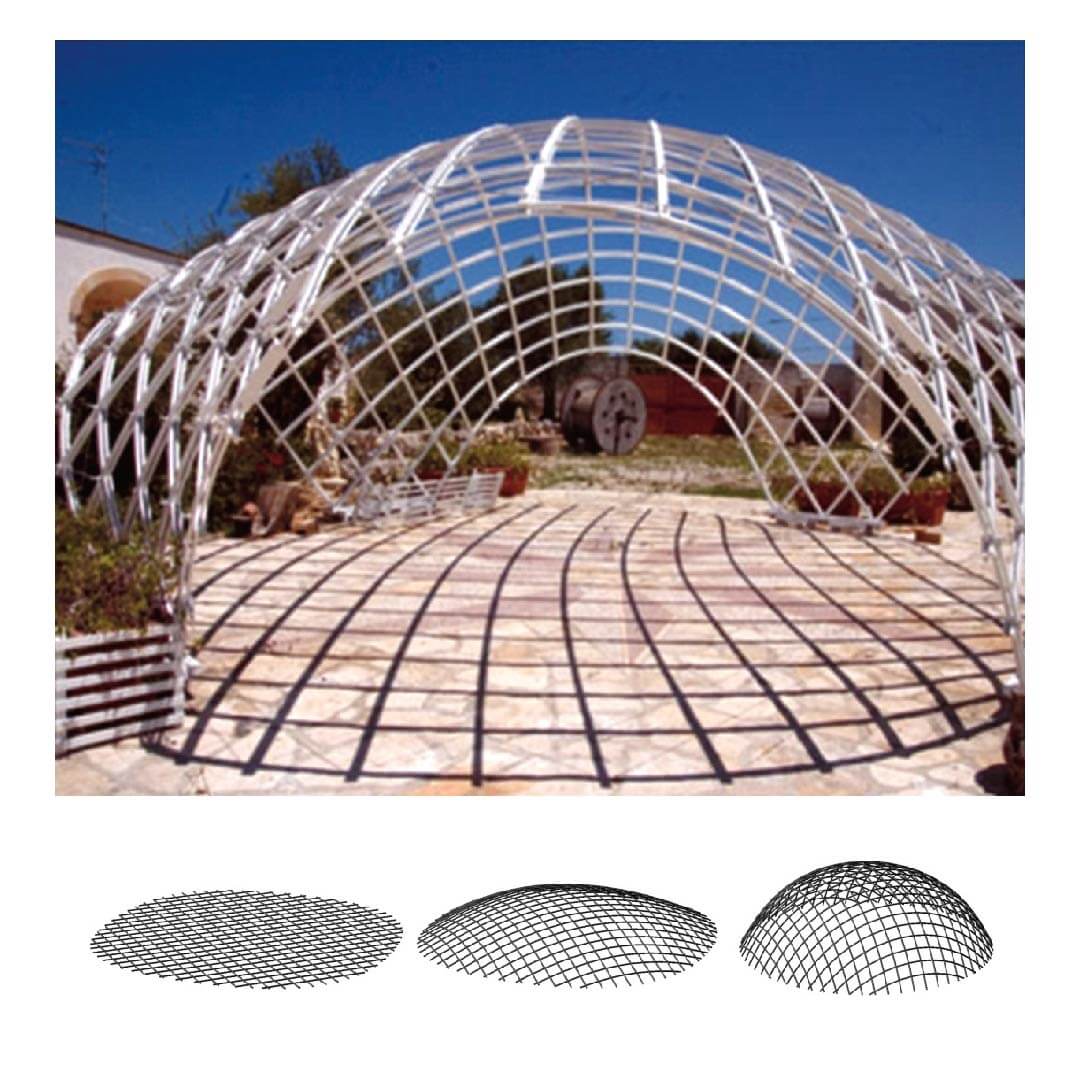 Free-form grid-shell structures can be formed by connecting short straight beam elements together into nodes thus converting a curved continuous surface in a faceted shell.
Free-form grid-shell structures can be formed by connecting short straight beam elements together into nodes thus converting a curved continuous surface in a faceted shell.
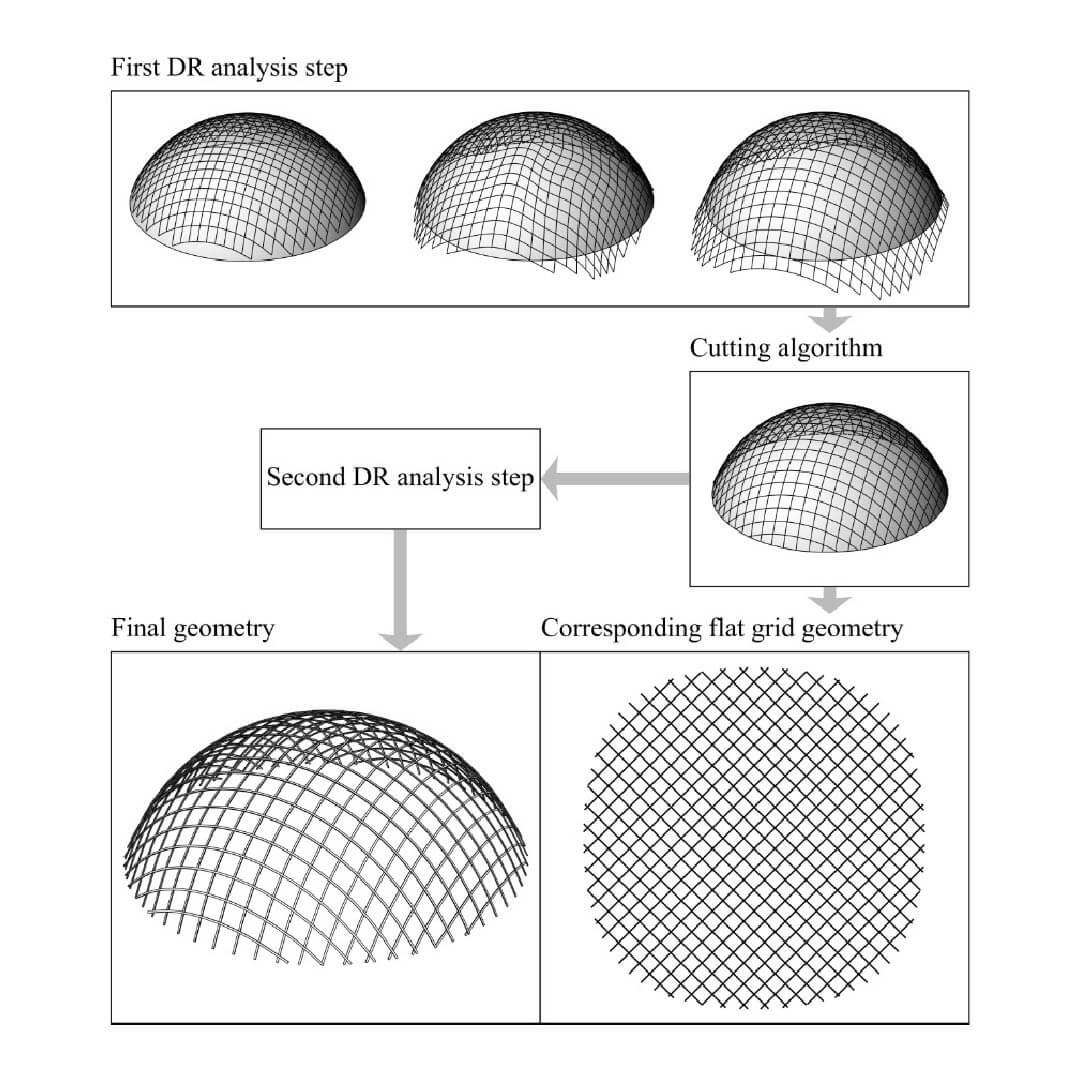 From a geometrical point of view, the described process deals with complex connection systems: Each element converges to the node of the grid at a different angle, thus non-standard connections (and Computer-Aided Manufacturing process) become inevitable.
From a geometrical point of view, the described process deals with complex connection systems: Each element converges to the node of the grid at a different angle, thus non-standard connections (and Computer-Aided Manufacturing process) become inevitable.
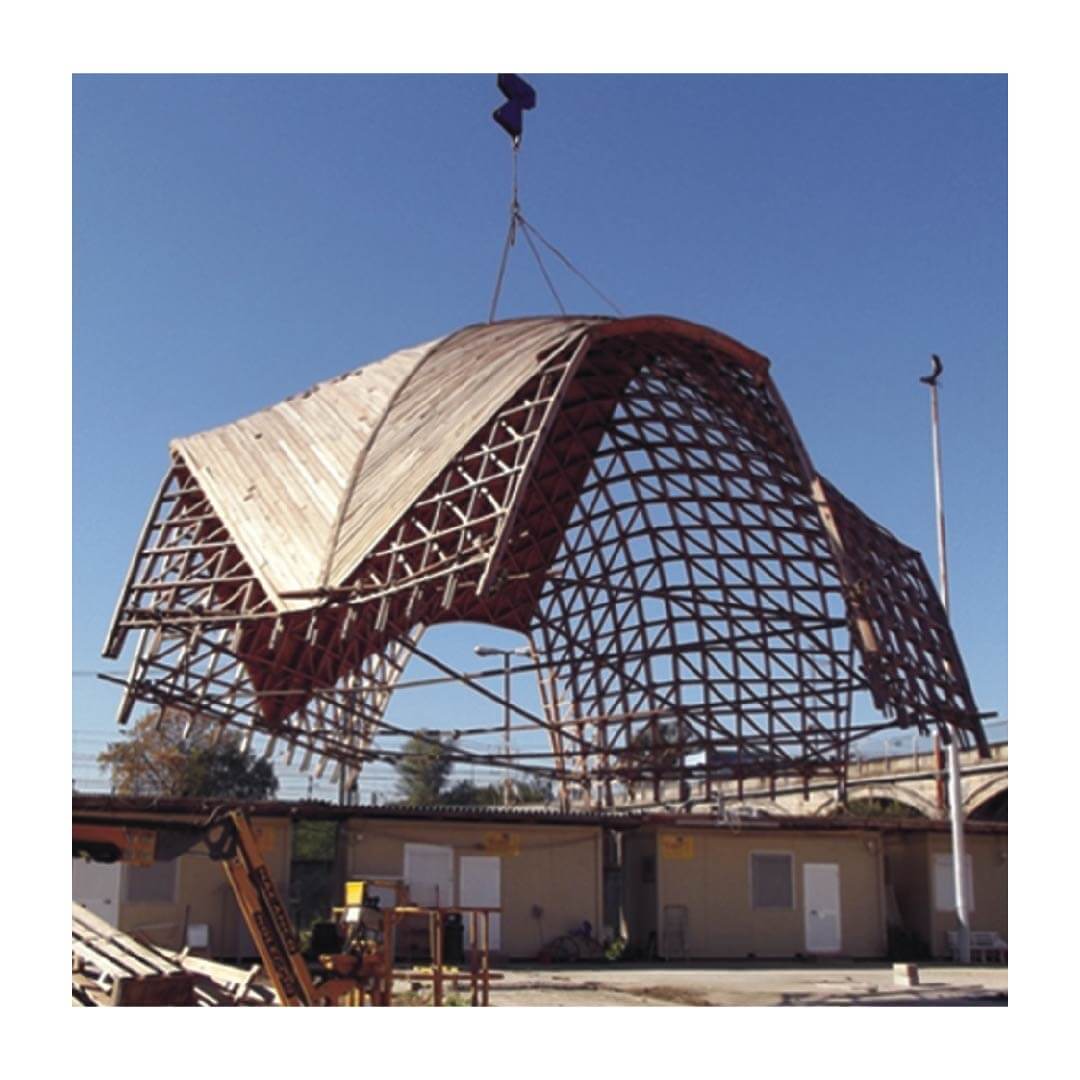 A ‘low-tech’ method for building free-form structures using standard (bolted/screwed) connection systems is by bending initially flat elastic rods, such as solid timber planks/laths, to form actual continuous curves.
A ‘low-tech’ method for building free-form structures using standard (bolted/screwed) connection systems is by bending initially flat elastic rods, such as solid timber planks/laths, to form actual continuous curves.
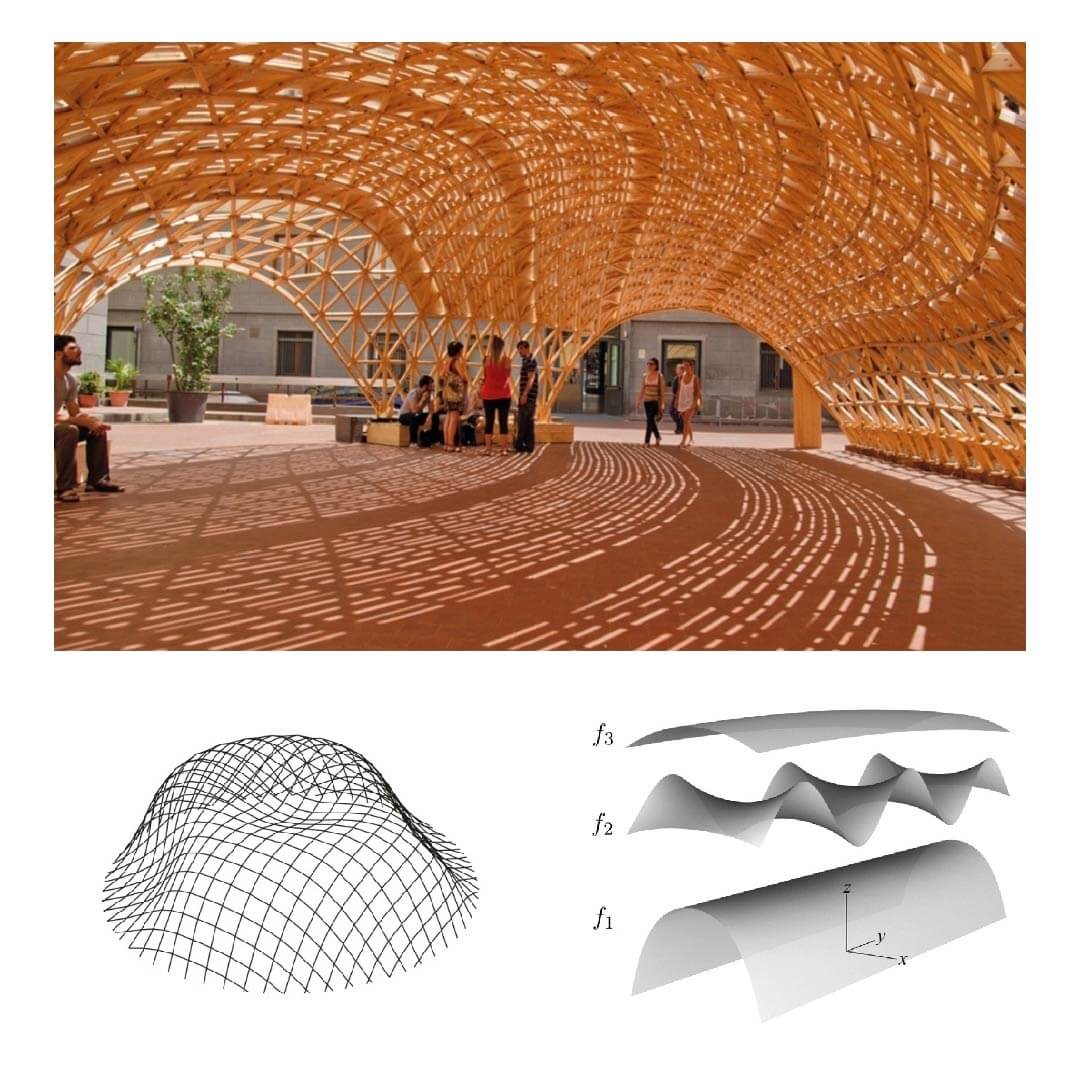 For timber grid shells made of continuous bending members, two subcategories can be defined differentiating on the geometric parameters assigned to generate a grid on a surface: If screwed laminated timber ribs are arranged following geodesic patterns (shortest curve on a surface for two given points) the planks composing the rib will only be subjected to torsion and bending around the weak axis enhancing the ‘allowable’ width of the the plank’s cross section.
For timber grid shells made of continuous bending members, two subcategories can be defined differentiating on the geometric parameters assigned to generate a grid on a surface: If screwed laminated timber ribs are arranged following geodesic patterns (shortest curve on a surface for two given points) the planks composing the rib will only be subjected to torsion and bending around the weak axis enhancing the ‘allowable’ width of the the plank’s cross section.
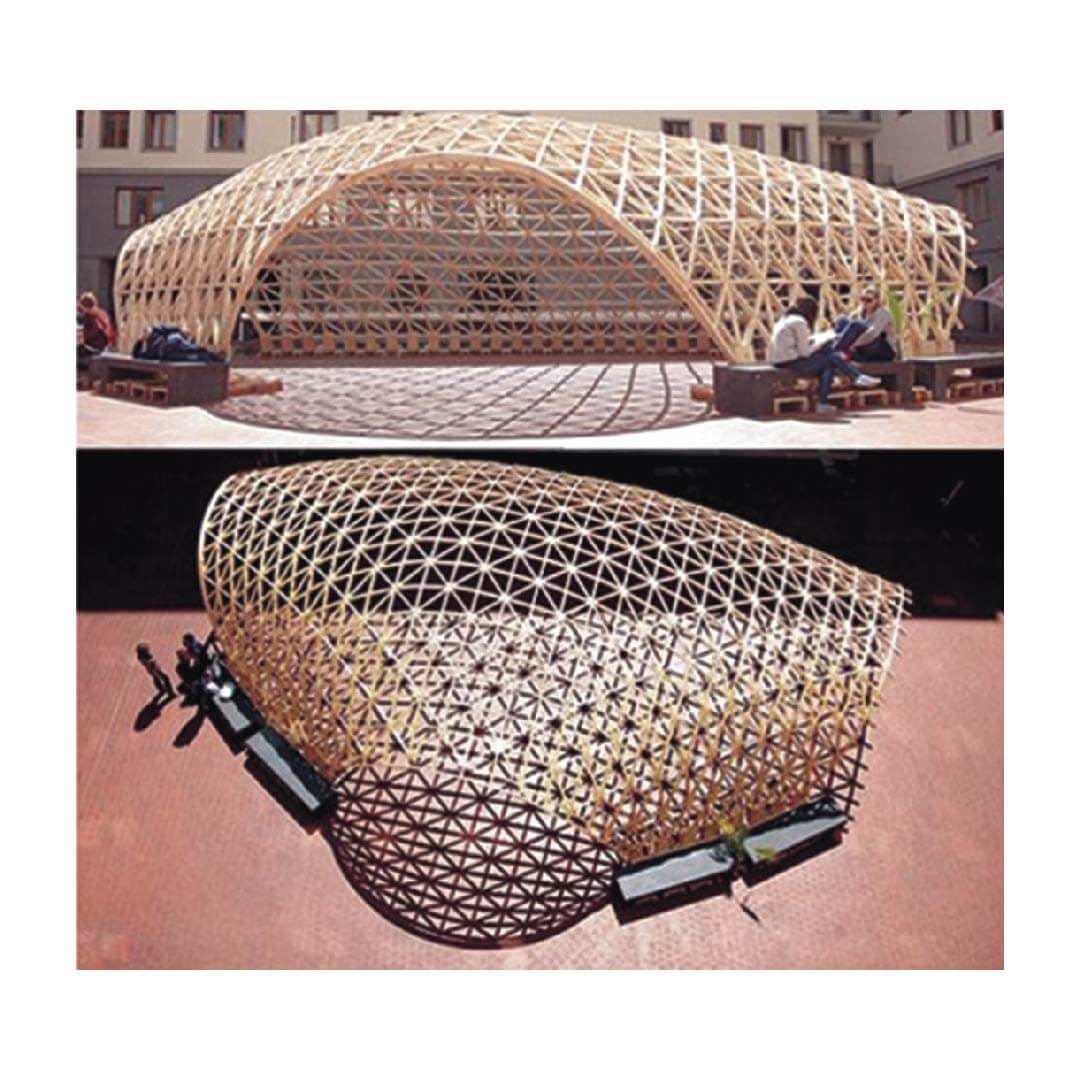 This technique was used for the construction of the Hannover Expo pavilion. A different approach was adopted in the design of the Mannheim timber grid shell for the Garden Festival.
This technique was used for the construction of the Hannover Expo pavilion. A different approach was adopted in the design of the Mannheim timber grid shell for the Garden Festival.
In this case, it was assumed a constant distance (50mm) between the consecutive nodes belonging to the same rib, which was built-up with two overlapping laths (double layer technique).
Accordingly, the resulting mesh geometry of the grid shell did not follow the geodesic paths (thus, lateral bending occurs as well).
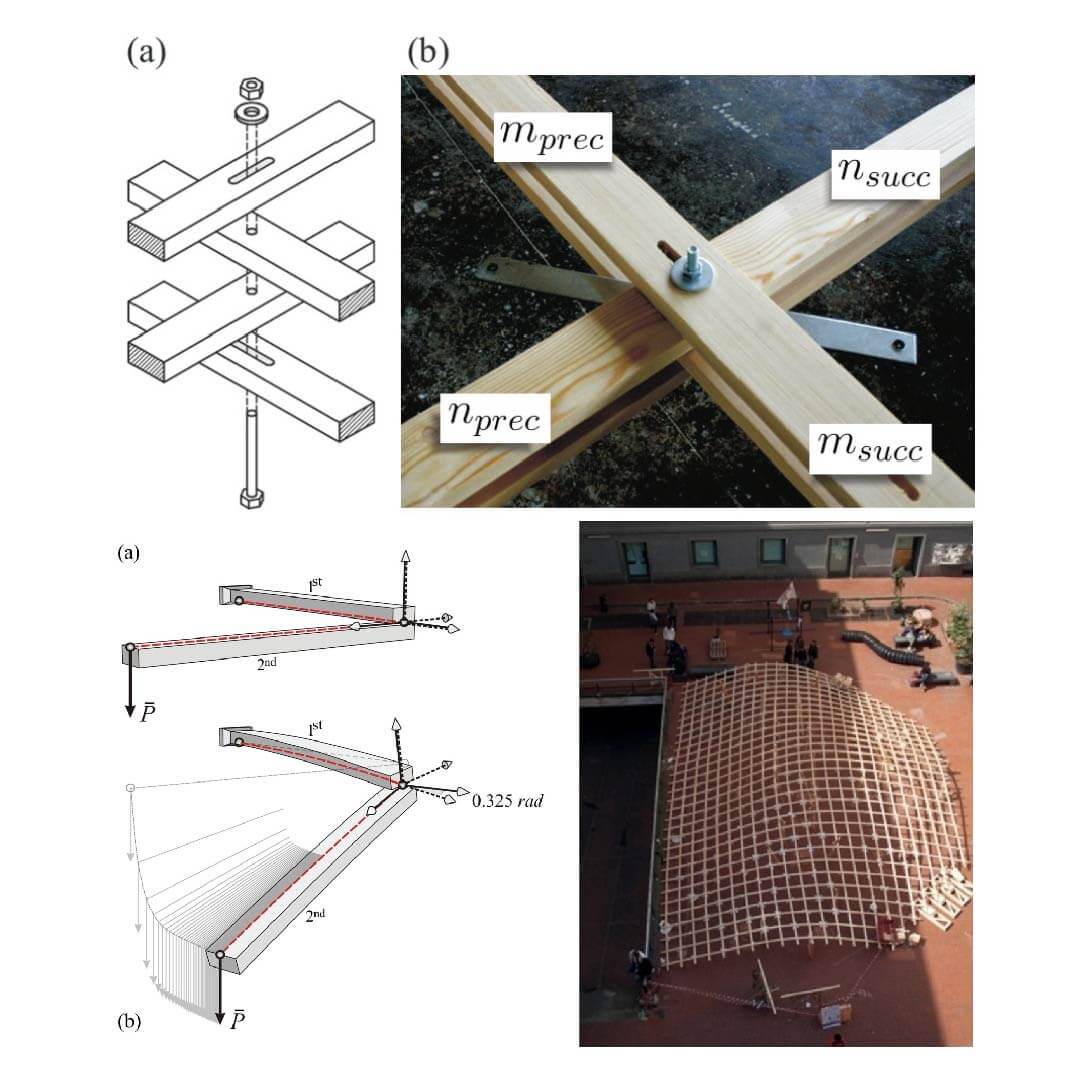 However, this second design approach allowed the possibility of assembling the grid shell laid out flat (as a two-way mat of straight continuous rods) and eventually post forming it in a double curved geometry by imposing external displacements under the form of temporary crane-cable systems or adjustable scaffolding.
However, this second design approach allowed the possibility of assembling the grid shell laid out flat (as a two-way mat of straight continuous rods) and eventually post forming it in a double curved geometry by imposing external displacements under the form of temporary crane-cable systems or adjustable scaffolding.
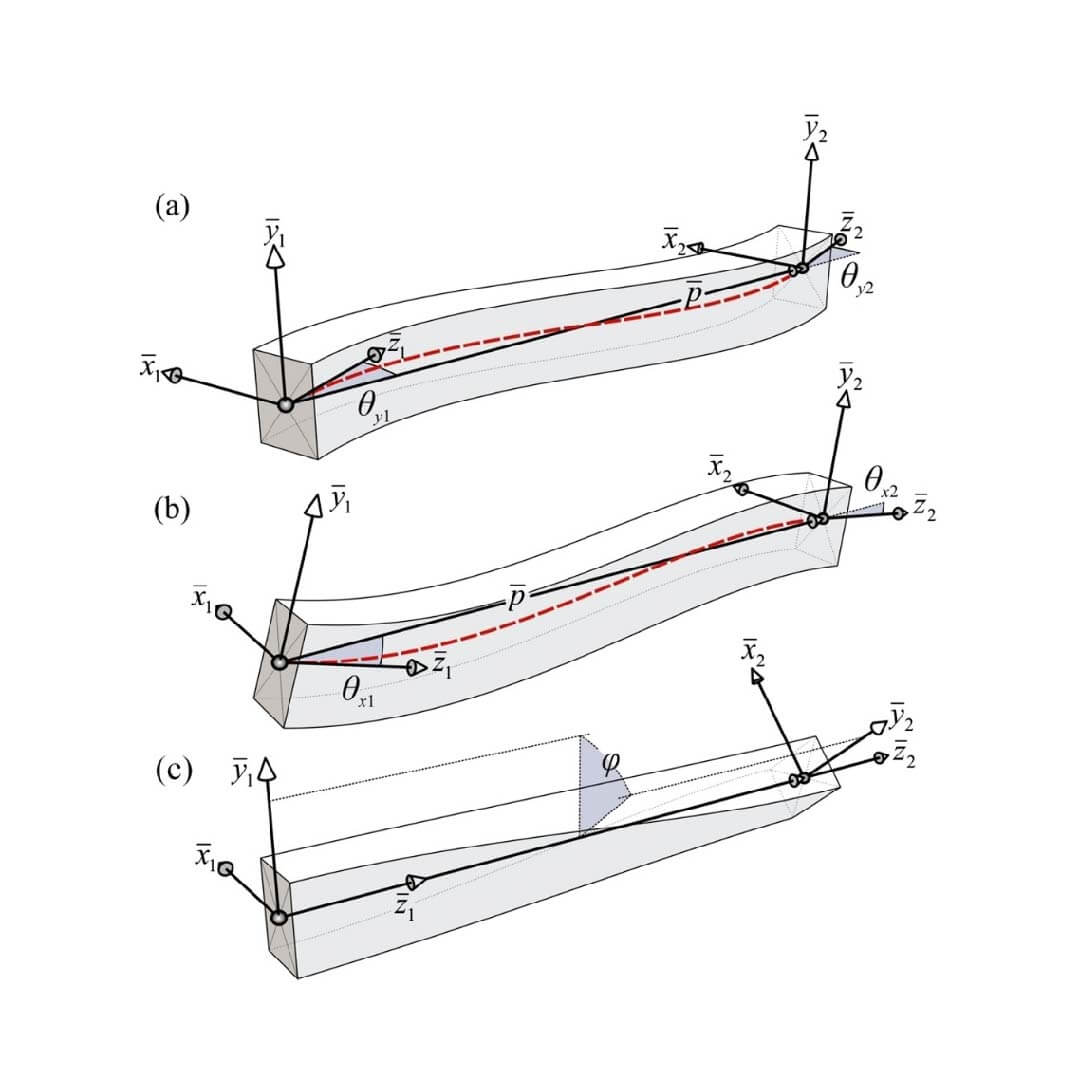 With the main grid eventually formed, additional bracing elements can be added to the system enhancing the in-plane shear stiffness of the equivalent shell. The terms post formed, actively or elastically bent are usually used to describe such kind of grid shell structures.
With the main grid eventually formed, additional bracing elements can be added to the system enhancing the in-plane shear stiffness of the equivalent shell. The terms post formed, actively or elastically bent are usually used to describe such kind of grid shell structures.




























Comments